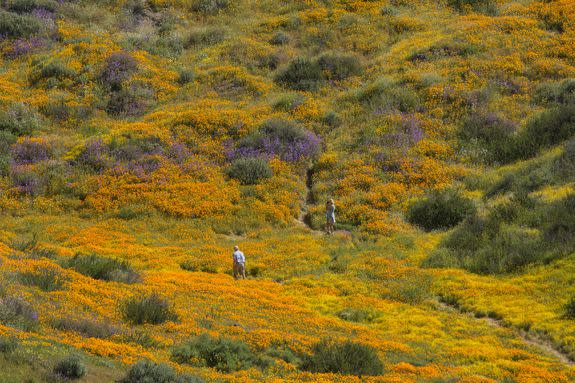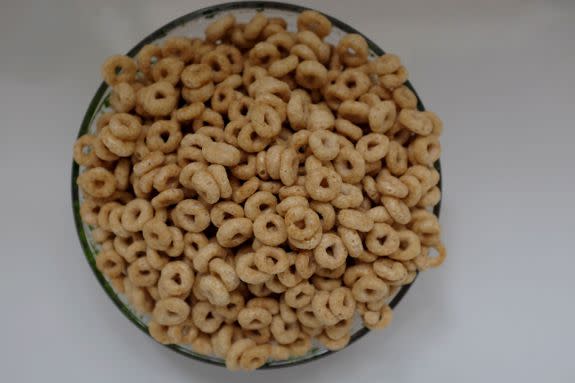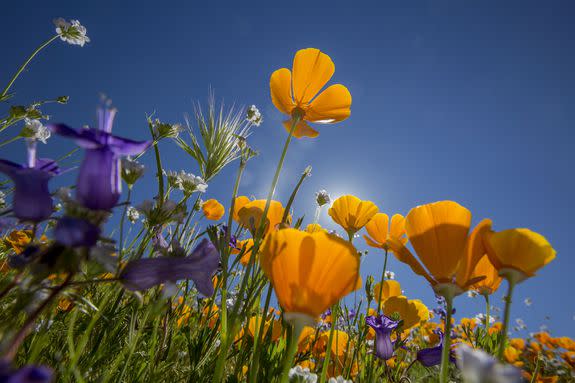Not everyone's thrilled Cheerios gave away 1.5 billion wildflower seeds to save the bees

Cheerios' recent campaign to give away flower seeds was both wildly popular and, no surprise, controversial.
General Mills, maker of the O-shaped oat cereal, said it initially planned to dole out 100 million wildflower seeds to customers who requested them.
The goal? Boost the ranks of North America's imperiled bees. Cheerios instead gave away 1.5 billion seeds, depleting its entire stockpile.
SEE ALSO: This pollinating bee drone shows the power of these endangered creatures
"In one week, the campaign not only reached its goal, but surpassed it by an un-bee-lievable amount," the company announced on March 17, causing a universal groan.
Cheerios encouraged the seed recipients to plant wildflowers in their backyards to provide more nectar and pollen for bumblebees, honeybees and other struggling species.
We're thrilled by the unBEElievable support to #bringbackthebees! Let's continue to create a bee-friendlier world! https://t.co/uZPmjyslrH
— Cheerios (@cheerios) March 17, 2017
As pollinators, bees play a vital role in sustaining our ecosystems and helping plants and food crops thrive and reproduce.
Yet in North America, bees have suffered staggering losses in the last decade because of the abundant use of pesticides, the spread of parasites and habitat loss from industrial agriculture and expanding real estate.
Seven of Hawaii's yellow-faced bee species are officially listed as endangered. On the mainland U.S., the rusty patch bumblebee was supposed to be added to the endangered species list in February — until the Trump administration ordered a temporary freeze on new federal regulations, delaying the bee's listing.
In recent days, some bee experts have praised Cheerios' wildflower campaign, while others said they worried it could do more harm than good.
"I think that any time we can throw out some seeds for flowering plants that bees like, we should do it," Gordon Frankie, an entomology professor at University of California, Berkeley, told the website Snopes. "Bees need all the help they can get," he said.
Critics, by contrast, urged people to dump their seeds in a trash can — not a garden — for fear that the packets contain invasive wildflowers that could overtake native species and spread disease.
Kathryn Turner, an ecologist who specializes in invasive plants, told LifeHacker she was worried about Cheerios' approach.
"Context is important," she told the website. "No plant is inherently 'bad,' but many species can and have caused a great deal of damage when they are introduced into locations outside of their native range."

Image: david mcnew/Getty Images
Cheerios countered those concerns on Facebook, explaining the seed varieties in its Bee Friendlier Mix "are not considered invasive." The varieties "were selected for their flowers which produce nectar and pollen that are attractive to bees and other pollinators," the cereal maker said in reply to worried commenters.
Other Cheerios haters have said it's uncanny that General Mills is clamoring to "bring back the bees" while sourcing its oats from farms that use Monsanto's RoundUp. The herbicide, like other industrial chemicals, is suspected of contributing to bee population declines.
Last fall, a study by Food Democracy Now! indicated that RoundUp was used in fields where crops for popular packaged foods are grown. Lab tests found residues of the herbicide's active ingredient, glyphosate, in original and Honey Nut Cheerios, Doritos, Oreos, Fritos and other grain-based snacks.

Image: joe raedle/Getty Images
"Pretending to be concerned about the environment when you are buying oats that have been sprayed with glyphosate doesn't fool anyone," a critic told Cheerios on Facebook.
We still don't know exactly how the chemical affects bees, just as scientists still aren't sure if glyphosate is harmful to humans. A 2015 study in the Journal of Economic Entomology said glyphosate and two other chemicals "have very minor or no acute toxicity to honey bees."
However, pesticides in general can harm communities of bees by reducing ecosystems to a few plants and erasing the abundance of pollen and nectar. That's true not only of industrial farms but also our own gardens, suburban landscapes and recreational areas.

Image: david mcnew/Getty Images
"Insecticides, by design, kill insects and herbicides reduce floral diversity," Xerces Society, a nonprofit conservation organization, said in its handbook for conserving bumblebees.
Fortunately, environmental groups have plenty of tips for how to help bee species across the country.
The National Wildlife Federation recommends planting native, pollen-producing flowers in your garden and avoiding pesticides altogether. With Bumble Bee Watch, citizen scientists can report bee sightings in their backyards to help gather data on the population and geography.
